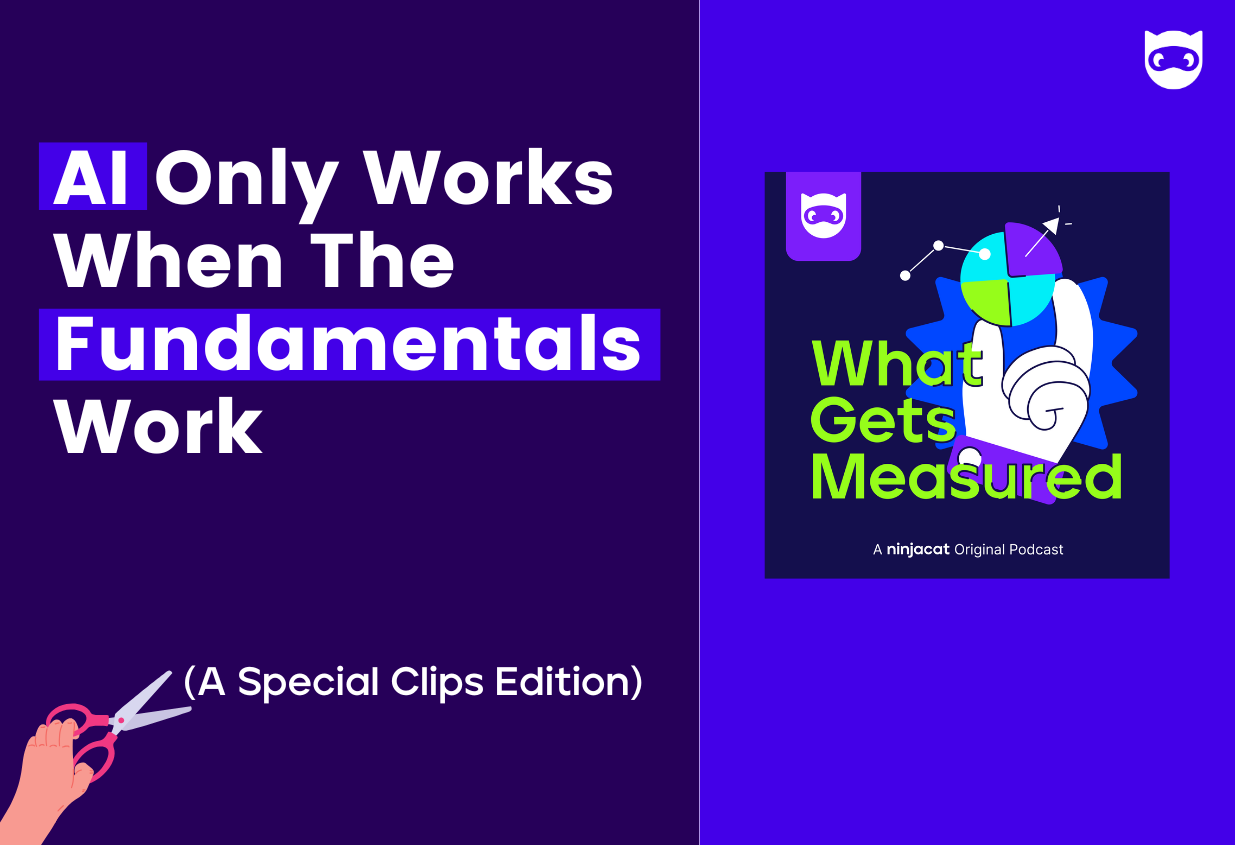Seven Tips for Data Storytelling That Make An Impact

Anyone who’s ever produced a marketing report knows that data does not equal insight. Numbers alone don’t inspire action. But when implemented properly, effective data storytelling can definitely leave an impact. Let’s start with a brief retrospective on the history of data storytelling and then cover ways to enhance and improve your approach to presenting data.
A Brief History of Data Storytelling
Who can pinpoint precisely when we began using data to convey meaning and influence? Maybe it was when the first farmers tried to keep stock of what cattle and grain they’d produced that season. Or maybe it was when the first cave restaurateur tried to figure out the ROI of their mammoth burger franchise. Perhaps it was a bean counter in the ancient Roman senate, or the first digital marketer to discover the funnel.

Whatever the case, humans involved in transactional relationships have been using data to keep tabs, guide strategy, and document all of the performance and progress of business since the beginning of civilization. And just as long as humans have been gathering data, they’ve been trying to communicate what the data means to one another.
You would think since we have thousands of years of head start on learning how to tell a story with data and analytics, we’d be living in the worry-free world of the future. But in many respects, data storytelling is still in the stone age. Here are seven tips for data storytelling that will leave an impact on clients and stakeholders, today.
1. Be easy on the eyes
When it comes to data storytelling in a stakeholder report, there are many considerations, chief among them is clarity of data visualization. If marketers wish to translate value more effectively into their reports and use this information to guide strategy, it doesn’t help if the graphs presented look like a scary ride at Six Flags.

Ensure your marketing data visualizations can be understood within a short glance and aren’t so complex they cause confusion. Overlapping lines and colors, too many explanatory texts on the periphery; these design choices can increase questions and cognitive load.

Use contrasting colors and consistent shapes with assistive text placed near the graphs to keep the audience engaged and their eyes, and minds, focused.
2. Showing > Telling
Another tip to remember for impactful data storytelling is that telling is not as effective as showing. It’s not only the contents of the words on a presentation that matter, it’s the amount of words on a single slide, period.
Just think of those meetings or webinars where you were slowly suffocated by too many words on a slide…

Impactful data storytelling requires a balance between visuals and text, but the latter should typically supersede the former. Keep the ratio of words to graphics low and reserve text for explanations, insights, or wrap-ups. ,
3. Context is key
There is a common saying in marketing that “content is king,” but when it comes to data storytelling, context is the kingdom. Data storytelling requires a blend of visualization, context, and narrative. Even the best hockey-stick line chart must be easy to understand and 100% explainable. Just “looking good” isn’t an insight.
Certain marketing data visualizations are better at illustrating trends and context better than others. For example, line graphs and heat maps are great for expressing changes over time or exposing variability or clusters of interest in data sets, whereas scatter plots and bar graphs may be more useful if you’re examining point-in-time relationships.
Again, there is no right answer here, just a reminder that effective data storytelling is about controlling the context just as much as controlling the content.
4. Provide qualitative commentary to summarize data points
If pictures say a thousand words, then impactful data storytelling ensures the audience takes away the right ones. A nice graph, going up and to the right, isn’t compelling enough without qualitative commentary. In order for any information to be received properly by an audience, it has to be easily understandable and considerate of their data tolerance. The leadership, finance, and sales teams will each have unique questions or concerns about the same Google Ads Report. Anticipate and prepare for specific questions while building your presentation.
Analysis should be delivered through clear language, with a purpose behind every metric, and the presentation formatted to suit the audience.
5. Inspiration > Information
Translating data into an impactful story requires a marketing mindset geared toward curation; not every chart and graph is required. A report can look impressively busy with widgets and visualizations and at the same time, limit visibility into the true performance and progress of a campaign.
This is why effective data storytelling, just like traditional storytelling, benefits from frameworks that help shape the narrative.

An effective data story first integrates data into addressable issues, illustrates these in a way that’s insightful to the audience and inspires inquiry, then outlines intentions for the next iteration. Successful data storytelling isn’t about storybook endings, it’s about Never Ending Stories!
6. Skip small wonders, provide the scenic view
Recently there was a fantastic LinkedIn post about marketing data analytics from consultant Robert van Ossenbruggen in which he makes some insightful observations related to data storytelling. He talks about the typical marketing report being a bulky slide deck with lots of numbers, which focuses on the differences between data sets, ie. what grew, what shrunk, etc.
Instead of asking what’s significantly different about metrics, Robert posits that the more insightful question might be, “what are the patterns here?.”
By focusing on small areas of interest, marketers can miss opportunities to widen the lens and provide a high level understanding for their audience. Before digging into data on a micro level, take a step back and make sense of the numbers on a macro level. His last quote says it all:
“Long story short: don’t get distracted by a tsunami of ‘possibly interesting’ little things that might be statistically significant but utterly useless from a business perspective.”
7. Data leads to decisions
An important data storytelling consideration when building a marketing report is understanding what decisions need to be made based on the data presented, and even further, what kind of justifications and explanations will the report and action items inspire up the ladder? If you can anticipate these decisions, you’ll build a better deck filled with better data that illustrates a better story.
Rather than throwing whatever data you have available in a report, focus on the input indicators that you’d like to highlight. What leading or lagging indicators need to be considered in your suggested next steps? Are there exogenous factors in your specific vertical that should be referenced or incorporated into your analysis?
By identifying the data sets you’d like to feature in a marketing report before you build it, and fully understanding the decisions that must be made, you can set yourself up for impactful data storytelling.




.png)
